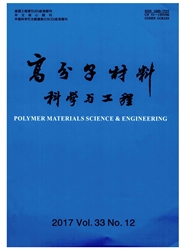

 中文摘要:
中文摘要:
综述了PEG及其衍生物在生物医用材料表面血液相容性改性中的应用,并介绍了对改性后的表面进行表征的常用方法和手段,如反射红外,水接触角,光电子能谱,表面等离子共振,椭圆偏振仪,蛋白质亲和印迹,蛋白质标记等。
 英文摘要:
英文摘要:
Poly(ethylene glycol)(PEG) and its derivatives are accepted as a kind of ideal polymers to improve surface blood compatibility of biomaterials. Due to their excellent hydrophilicity, mobility, biological inertness, resistance properties of protein adsorption and cell adhesion, PEG and its derivatives are widely used in surface modification of biomaterials. In this article, the applications of PEG and its derivatives in surface modification to improve blood compatibility of biomaterials were reviewed. Some techniques, ATR-FT-IR, Water Contact Angle, X-ray photoelectron spectrometer, Surface Plasmon Resonance, Ellipsometry, Western blot, protein Labeling technology, which are used to characterize PEG-modified biomaterial surfaces, were also introduced in this paper.
 同期刊论文项目
同期刊论文项目
 同项目期刊论文
同项目期刊论文
 期刊信息
期刊信息
